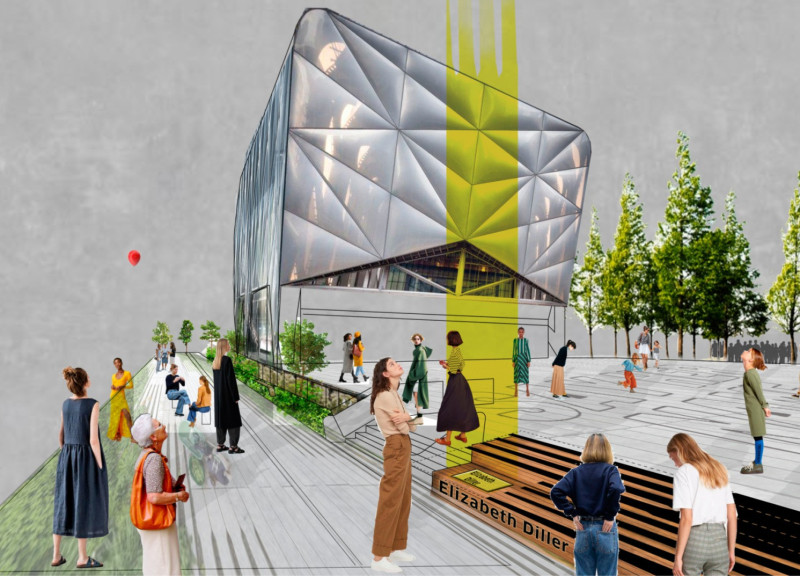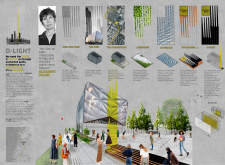5 key facts about this project
The building is distinguished by its innovative use of materials, including glass, steel, wood, and concrete. The extensive glass façade allows natural light to enter, creating an inviting atmosphere while also reflecting the urban environment. Steel is utilized for structural support, ensuring safety and durability. The use of wood in specific areas adds warmth and enhances the tactile experience of the space. Concrete provides a robust foundation and functional pathways for visitors.
The project's main features include the Light Beam, which channels light throughout the structure, enhancing visibility and engagement. This feature not only serves a functional purpose but also creates a visually cohesive experience. The design promotes flexibility, allowing the space to host a variety of events, from performances to art exhibitions. This adaptability supports the evolving cultural landscape of New York City.
One of the unique aspects of "D-LIGHT" is its integration with the surrounding environment, particularly the High Line. The architecture encourages pedestrian flow from the park to the building, blurring the boundaries between nature and urban design. The inclusion of the D-Light Box serves as both an artistic installation and a communal gathering point, fostering interactions among visitors.
The project also prioritizes ecological sustainability, utilizing materials and practices that minimize environmental impact. This approach aligns with current trends in architectural design, which emphasize the importance of creating spaces that are both functional and environmentally conscious.
For further insights, readers are encouraged to explore the project presentation, including architectural plans, architectural sections, and architectural ideas, to fully appreciate the design's depth and complexities. An examination of these elements will reveal the project's thoughtful integration of community needs with artistic vision, establishing "D-LIGHT" as a notable addition to New York’s architectural landscape.























